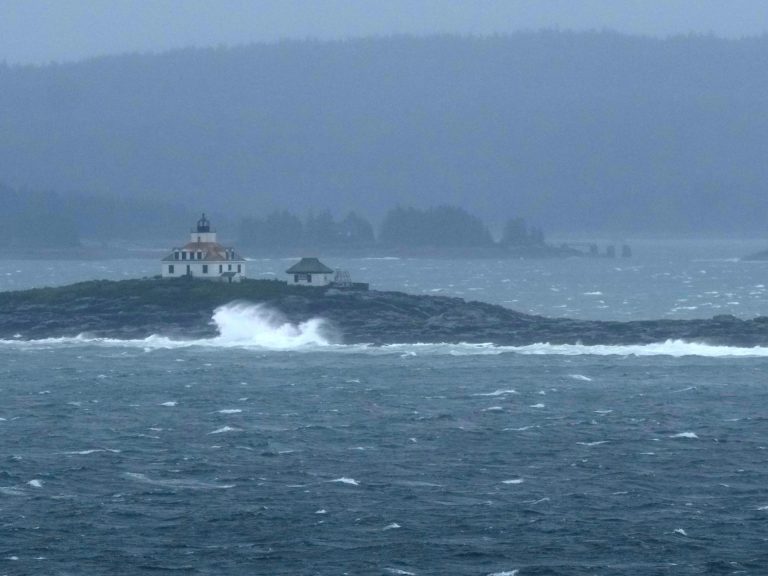The storm threatened to make landfall on Saturday, bringing hurricane-force winds, dangerous waves and heavy rain.
Storm Lee, downgraded to a post-tropical cyclone, began battering the northeastern United States and across the border into Canada, dumping heavy rain and knocking out power to tens of thousands.
Severe conditions are expected across parts of Massachusetts and Maine in the United States, and hurricane conditions could hit the Canadian provinces of New Brunswick and Nova Scotia, where a weak storm is expected to make landfall later in the day.
Winds gusting at 130 kilometers per hour (81 mph), coastal flooding and heavy rain are already occurring in parts of the New England region of the United States and Atlantic Canada, the US National Hurricane Center (NHC) said in its latest warnings on Saturday.
Earlier, the Canadian Hurricane Center predicted that Lee would make landfall in Nova Scotia sometime after 3 p.m. EDT (18:00 GMT) or later in New Brunswick with winds below hurricane force.
Parts of coastal Maine could see waves up to 4.5 meters (15 feet) high, causing erosion and damage, and strong storms will cause power outages, said Louise Foudy, a national weather service meteorologist. Up to 120 mm (5 inches) of rain is expected in eastern Maine, where a flash flood watch has been activated.
“The worst of this storm will be reserved for Canada's maritime provinces when it makes landfall on Saturday – mostly a wind event for Nova Scotia and a combination of wind and rain for New Brunswick,” said island meteorologist Jeff Harrington.
“So, according to the numbers, parts of New Brunswick will receive 100 millimeters of rain, and wind speeds in Halifax will reach about 100 kilometers per hour.” [62 mph]”So it will definitely cause some damage,” he said.
Utilities reported power outages to tens of thousands of customers from Maine to Nova Scotia.
In anticipation, US President Joe Biden's administration issued an emergency declaration for Maine, providing federal aid to the state ahead of the storm.
“We encourage everyone in the path of this large and dangerous storm to remain alert,” Whites press secretary Karine Jean-Pierre said at a news conference.
Lee has been moving as a major hurricane over the Atlantic Ocean for more than a week, briefly threatening Bermuda but mostly harmless to anyone on the ground. This is the second year in a row that such a powerful storm has reached Canada after Hurricane Fiona struck eastern Canada a year ago.
It swept across the US Virgin Islands, the Bahamas and Bermuda before heading north, and the powerful waves were likely to cause “life-threatening swells and disrupt current conditions” in the United States and Canada, according to the Hurricane Center.
Destructive tornadoes are relatively rare in the Far North. The Great New England Hurricane of 1938 brought wind gusts of up to 300 km/h (186 mph) and sustained winds of 195 km/h (121 mph) at Blue Hill Observatory in Massachusetts. But there have been no storms this strong in recent years.
The region learned the hard way with Hurricane Irene in 2011 that damage isn't always limited to the coast. After Hurricane Irene was downgraded to a tropical storm, it caused more than $800 million in damage in Vermont.

